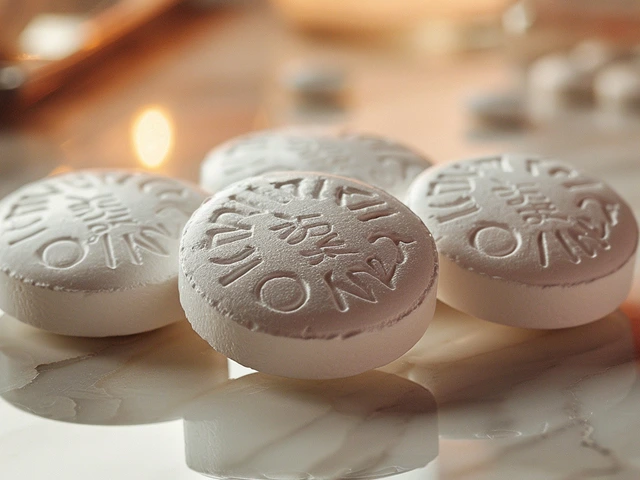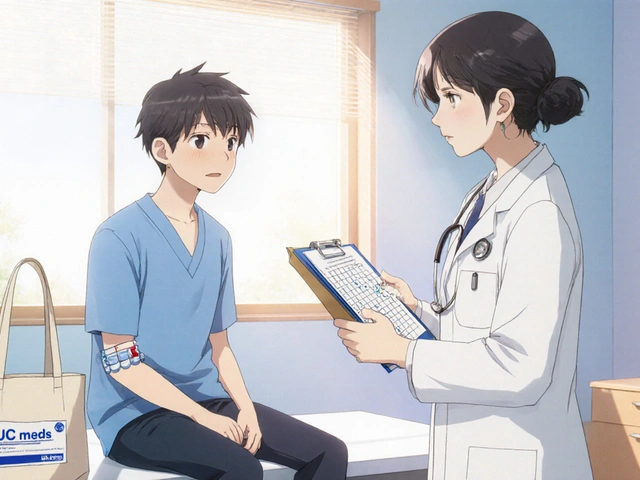Prevention: Simple Steps to Stay Healthy
Ever wonder why some people seem to dodge colds, cuts, and costly medication mishaps? The secret isn’t magic—it’s everyday choices that add up. This page pulls together the most useful prevention ideas from our articles so you can act now, not later.
Everyday Habits That Reduce Risk
First up, basics that most of us overlook. Hand washing for at least 20 seconds after you’ve been outside, before meals, and after using the restroom cuts infection chances dramatically. Pair that with a balanced diet rich in vitamins—think vitamin B6 from foods like bananas and chickpeas—to keep joints and immune cells humming. Our piece on pyridoxine shows that the right amount can soothe joint aches, but too much can backfire, so stick to the recommended daily value.
Next, move your body. A 30‑minute walk or a quick bike ride boosts circulation, lowers blood pressure, and helps the body clear out harmful substances. If you have a condition like hypertension or edema, regular activity works hand‑in‑hand with diuretics like Lasix (or its alternatives) to keep fluid levels steady.
Sleep matters, too. Aim for 7‑9 hours of uninterrupted rest. Poor sleep spikes stress hormones, which can raise blood sugar and make cravings for sugary snacks stronger—a link we explore in the escitalopram article. Better sleep = steadier glucose = less risk of diabetes down the road.
Medication Safety & Preventing Side Effects
Even the right drug can cause trouble if you’re not careful. Always check the dosage on the label; for example, loperamide (Imodium) looks harmless, but an overdose can be life‑threatening. Our overdose guide spells out the red flags and what to do if you suspect a problem.
When you order meds online, verify the pharmacy’s credentials. The Montelukast and mpncanada.com reviews teach you how to spot legit sites, compare prices, and avoid counterfeit pills. Buying from a reputable source protects you from hidden contaminants that could trigger allergic reactions or ineffective treatment.
Combine drugs wisely. Some combos, like certain antidepressants with blood‑sugar‑affecting meds, can raise cravings or cause dizziness. Talk to your pharmacist before mixing, and keep a simple list of everything you take—prescription, over‑the‑counter, and supplements like black seed oil (Nigella sativa) that can interact with blood thinners such as Plavix.
Finally, don’t skip follow‑up appointments. Blood‑clotting disorders, for instance, need regular monitoring to catch changes early. Our clotting disorders guide outlines symptoms to watch for and when a doctor’s visit can prevent a serious bleed or clot.
Putting these tips into practice doesn’t require a major life overhaul. Start with one habit—like an extra hand‑wash or a quick check of your medication label—and build from there. Prevention is all about small, consistent moves that add up to big health wins.

Scientific Research in the Fight Against Malaria: How Discovery Shapes Survival
- By : Archer Hamilton
- Date : Apr 27 2025
Malaria still kills hundreds of thousands every year, especially in parts of Africa and Asia. Scientific research has been the key driver behind every breakthrough in malaria prevention, treatment, and control. This article looks at how research makes new tools—like vaccines and rapid tests—possible, and why it matters for everyone, not just scientists. We’ll dig into real stories, facts you might not know, and tips on staying safe when malaria is a risk. Every section gives you practical info to help you understand and fight this disease.





